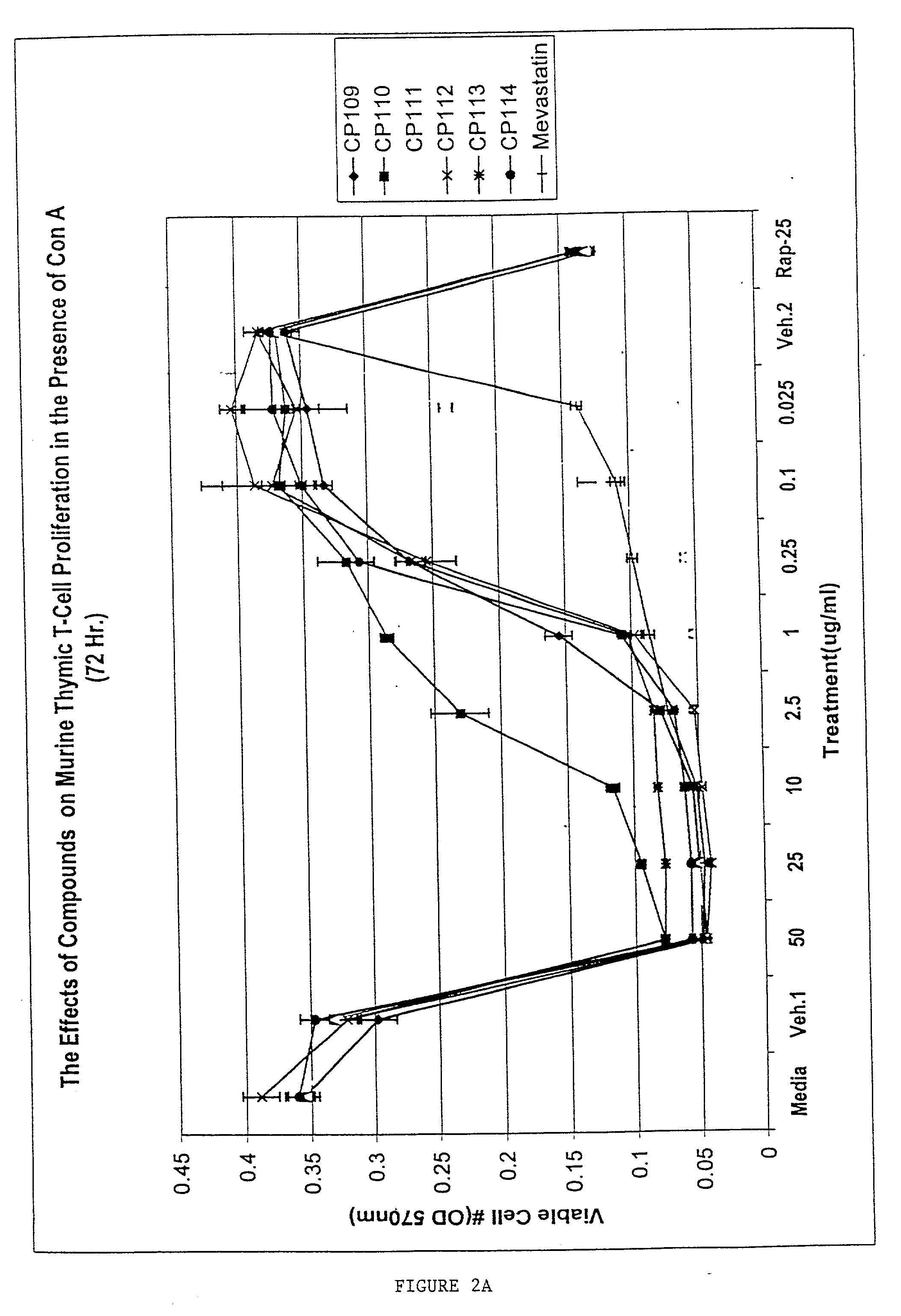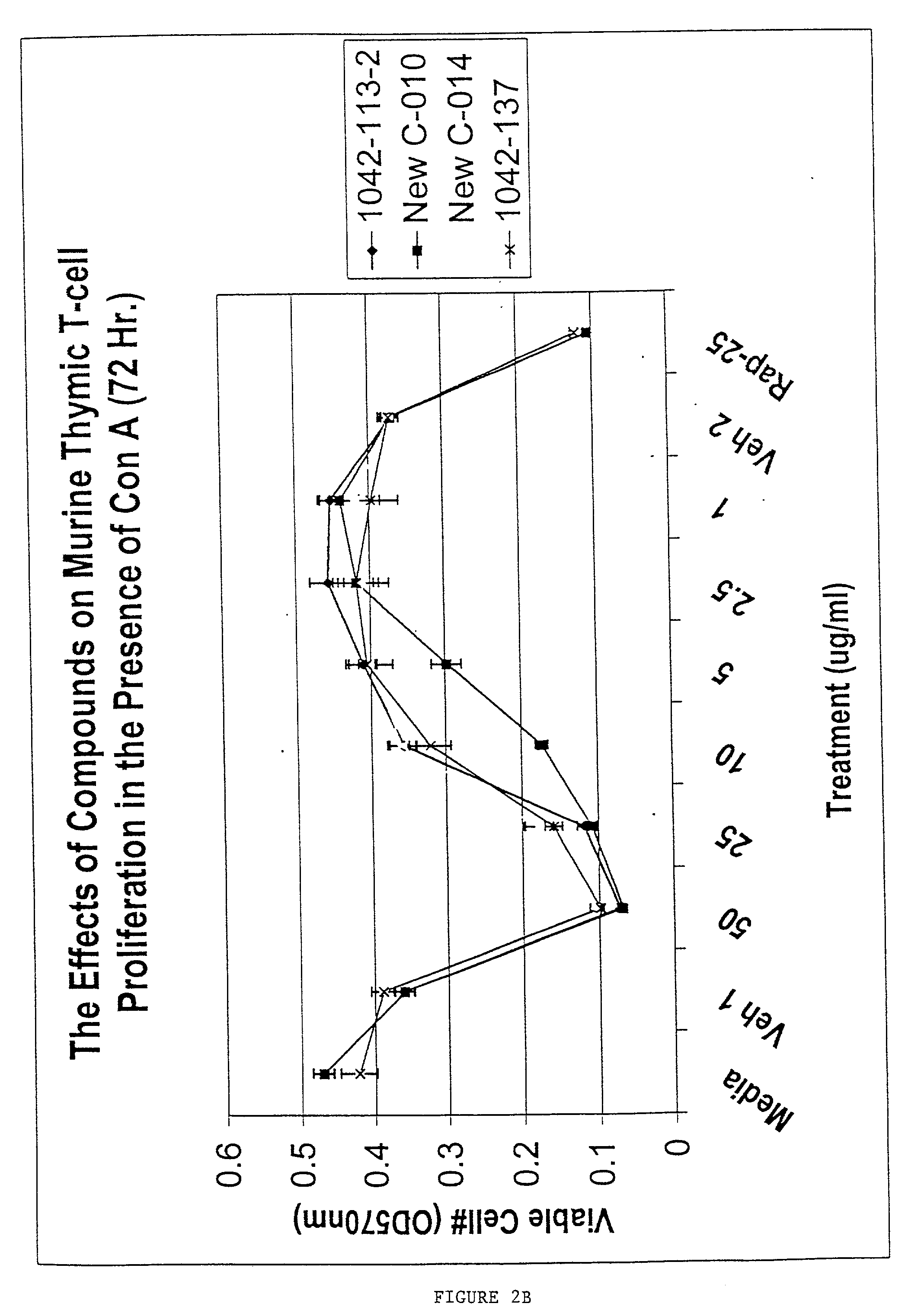Treatment of hyperproliferative, inflammatory and related mucocutaneous disorders using inhibitors of mevalonate synthesis and metabolism
a technology of mevalonate and synthesis, which is applied in the direction of drug compositions, powders, aerosol delivery, etc., can solve the problems of reduced blood supply, thinning and deteriorating skin, and difficulty in breathing, so as to reduce the ic.sub.50 of mevastatin, inhibit expression, and effectively block the proliferation of t cells
- Summary
- Abstract
- Description
- Claims
- Application Information
AI Technical Summary
Benefits of technology
Problems solved by technology
Method used
Image
Examples
example 1
Inhibition of 12-O-Tetradecanoyl-13-Phorbol Acetate (TPA)-Induced Ear Swelling by Mevastatin
[0101] Mevastatin was tested topically at 0.5% with several oxysterols known to downregulate HMG-CoA reductase expression, including 25-hydroxycholesterol, in the mouse acute irritant dermatitis model. TPA was applied topically to the ears of mice and the resultant swelling response was measured 24 hr later. Compounds or vehicle alone were topically applied to ears 1 and 6 hr following TPA treatment. The data was expressed as a percent inhibition of the swelling response in the presence of compounds as compared to ears treated with vehicle only. This experiment showed that mevastatin significantly inhibited TPA-induced ear swelling (FIG. 1).
example 2
Inhibition of ConA-Induced Murine Thymocyte Proliferation by Mevastatin
[0102] Murine thymic T cells were stimulated with Concanavalin A and incubated for 72 hr, and proliferation was then assessed by measuring viable cell number using the MTT assay (OD 570 nm proportional to viable cell number). Different concentrations of mevastatin and oxysterol alone (CP compounds; Panel A) or oxysterol combined with lanolin (Panel B) were added to the cells 1 hr following ConA treatment (FIG. 2). This experiment showed that mevastatin was able to potently inhibit murine thymocyte proliferation induced by the mitogen ConA.
example 3
Inhibition of T Cell Proliferation by Mevastatin is Reversed by Mevalonate
[0103] T cells were incubated with different concentrations of mevastatin (CP 115) alone or in the presence of 1 mM mevalonate (MA). The inhibition of T cell proliferation by mevastatin was prevented by addition of mevalonic acid, the product of the HMG-CoA reductase reaction (FIG. 3). The inhibition of T cell proliferation by mevastatin was thus reversed by mevalonate.
PUM
| Property | Measurement | Unit |
|---|---|---|
| weight | aaaaa | aaaaa |
| concentrations | aaaaa | aaaaa |
| concentration | aaaaa | aaaaa |
Abstract
Description
Claims
Application Information
 Login to View More
Login to View More - R&D
- Intellectual Property
- Life Sciences
- Materials
- Tech Scout
- Unparalleled Data Quality
- Higher Quality Content
- 60% Fewer Hallucinations
Browse by: Latest US Patents, China's latest patents, Technical Efficacy Thesaurus, Application Domain, Technology Topic, Popular Technical Reports.
© 2025 PatSnap. All rights reserved.Legal|Privacy policy|Modern Slavery Act Transparency Statement|Sitemap|About US| Contact US: help@patsnap.com



